Multislice computed tomography of the kidneys (MSCT) is a method of radiation research body in the course of which layers is a large number of images.
This procedure allows more accurate assessment of the morphological state of the kidneys and adrenal glands, is considered the most informative method of diagnostics of diseases such as urolithiasis.
Modern equipment for MSCT offers the ability to make the slices no more than 1 mm, so you can visualize the smallest details of the renal parenchyma and their sine. Based on the obtained images it is possible to construct a three-dimensional model of the body – it gives the opportunity to visually see the overall picture of changes in the structure of the kidney.
Standard CT of the kidneys includes native research, that is, without the use of radiopaque substances. In addition, this includes a diagnostic procedure after bolus injection of contrast.
Snapshots can be done in different phases of injection of contrast:
- blood;
- parenchymal;
- excretory;
- deferred if necessary.
The resulting CT

The advantages of MSCT
Possibilities of multislice computed tomography combines the advantages of ultrasound examination, review of x-ray of the kidney and ureter, renal angiography and other diagnostic procedures.
MSCT allows sufficient to make a diagnosis evaluate the position of the kidneys relative to the bones of the skeleton and other organs, the condition of the parenchyma, the ratio of the excretory part of the body to its parenchyma, the state of surrounding kidney fat and muscle, functional state of the organ, its secretory capacity.
MSCT is one of the most accurate methods of imaging internal organs. Therefore, this diagnostic procedure is widespread in the detection of kidney stones. According to statistics, this technique makes it possible to identify the presence of this disease in a patient than other methods, regardless of the number contained in the stones of calcium.
Along with this, this study allows to diagnose acute occlusion of the renal vessels to determine how the affected kidney infection or trauma. CT is considered the best diagnostic procedure when planning surgical intervention.
This research method is well tolerated by patients. However, it has its indications and contraindications.
Indications for study
The list of indications for the purpose of this research method is quite wide.
Holding MSCT of the kidneys is indicated for diagnosis of the following diseases:
- acute and chronic inflammatory diseases, establishment of their stage variant, the presence of complications;
- congenital anomalies of the kidneys and urinary system;
- injuries, bruises of the kidneys and surrounding tissues;
- polycystic;
- neoplastic processes when it is required to determine the location and stage of the tumor, diagnosis of malignant tumors – renal cell carcinoma, nephroblastoma, lymphoma;
- tumors of the ureter;
- differential diagnosis between benign and malignant tumors;
- hemorrhage in the parenchyma of the organ;
- abscesses and other purulent processes.
- occlusion of the vessels of the kidneys;
- in hypertension – the presence of renovascular causes of the disease;
- diagnosis of urolithiasis, assessment of prognosis lithotripsy on the basis of the density of stones;
- renal colic is to determine the cause.
Contraindications for the procedure
Despite the fact that all patients can easily tolerate this study, there are contraindications. For example, it is impossible to conduct MSCT of the kidneys during pregnancy, regardless of duration. In this case, is assigned to less efficient but safer method of diagnosis – ultrasound or MRI. The first method is recommended in the first trimester of pregnancy, and the second in II and III.
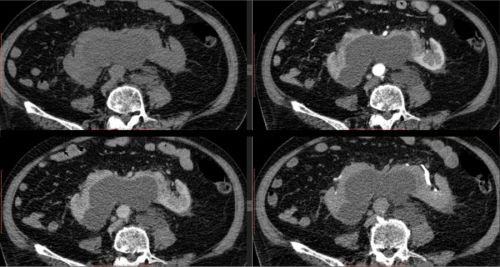
The series of images obtained with computed tomography of the kidneys
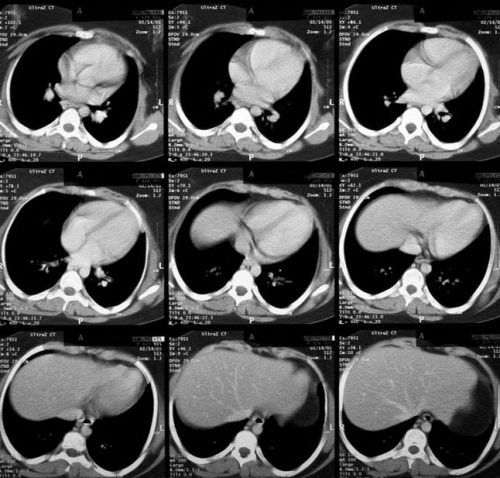
Other contraindications to MSCT relative. These include:
- the body weight of the patient over 120 kg, which is associated with disabilities devices for imaging;
- severe course of diabetes mellitus;
- severe General condition of the patient expressed pain syndrome, when the patient cannot long retain one position of the body – in these cases, you can also use ultrasound diagnostics.
As for CT of kidneys with contrast, there are restrictions in lactation. It is recommended that at the time of diagnostic procedures to suspend breast-feeding and to start it only after 24-48 hours after administration of contrast material. In this case, you can be sure that the drug is completely removed from the bloodstream and enters the body child with milk.
Along with this, a study with intravenous contrast is contraindicated in cases when the patient has established the presence of Allergy to iodine (the main ingredient in the drug is contrast).
The procedure of research
Consists of several stages.
Preparations for the implementation of MSCT
To perform this procedure requires no special preparation. However, it should be 2-3 hours before the start of the study do not consume any food, especially carbonated drinks – in those cases when CT will be carried out with the introduction of x-ray contrast agent. Before performing the procedure should wear comfortable clothing.
How is this study?
The patient is placed on the table of the imager, and the doctor walks into a separate room where the apparatus for remote process control studies.

There is the possibility of two-way communication, so the doctor can instruct the patient and himself studied may report about his health to the medical staff. In the case of complaints of the patient, the doctor is able to take measures in time.
People in the course of implementing this procedure shall lie on the table of the CT scanner, while x-rays are taken. If the patient during the study changes its position, moves, the picture will be inaccurate. In some cases, the doctor may ask the patient for a few seconds to hold your breath.
The result of MSCT
As a result, the doctor gets a few shots (cuts) that give him the opportunity to make a medical conclusion. The images and medical report is submitted to the patient – they can be printed or recorded on compact disk.
Usually the process of formulating the medical conclusion lasts about three days. In some cases, the radiologist can send images to other experts to obtain their opinion. In many clinics outside experts and record the result on the CD-ROM will be charged separately.
MSCT of the kidneys with intravenous contrast
This type of study performed for diagnosis of tumors, pathology of renal vessels and kidney stones. The contrast agent is a drug that is administered to the patient before starting the study.
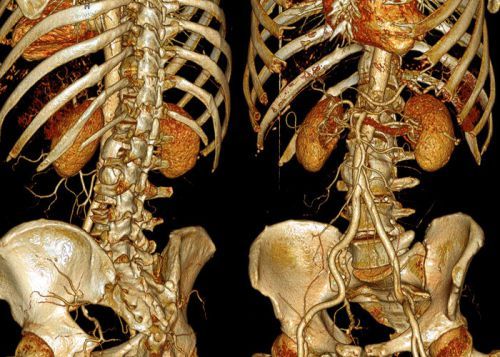
The most common contrast agents are gadolinium and iodine. Gadolinium is typically administered in the form of compounds with other substances, thanks to which you do not want to create a high blood concentration of the drug.
Both contrast agents give approximately the same results in terms of information. After the introduction they are about 24 hours in the blood stream, gradually vividas from the body with urine. In severe lesions of the kidney, e.g., renal failure, not recommended in this type of research, as the removal of radiopaque material are significantly reduced.
Before the introduction of the drug it is recommended to take pictures without contrast, to be able to compare the results obtained. The introduction of funds provided by an automatic injector, sometimes you can take it orally.
The risk to the patient
Multislice computed tomography is one of the most safe methods of research, but still, its principle of operation is based on x-rays. The radiation dose received after one procedure small, but frequent performance of MSCT can lead to excessive exposure of the body and complications.
With the introduction of contrast medium the patient can note the appearance of a sense of warmth throughout the body, metallic taste in mouth, allergic reactions in the form of a small swelling and rashes. In the latter case, the drug should be stopped.
As for more severe complications which can threaten the life of the patient (respiratory failure, sudden decrease in blood pressure, kidney development failure), at the present time when performing this diagnostic procedure, they are not marked. If MSCT is carried out to pregnant risks, the risk of congenital anomalies in the fetus.
Patients suffering from diabetes, not recommended for CT of kidneys with contrast injection. This is due to the fact that the combination of contrast with the patient is taking drugs can cause the development of severe complications, including acute kidney failure.
Alternatives to MSCT
Despite the safety of this procedure, in some cases it is necessary to resort to other diagnostic methods.
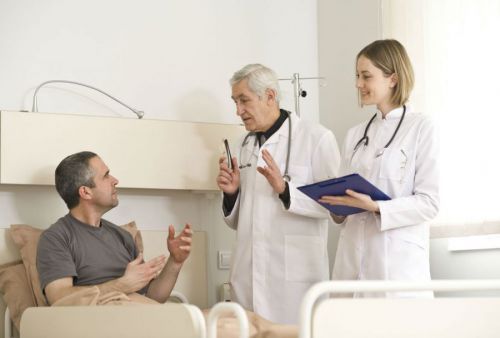
Patients with kidney disease is usually carried out following diagnostic services:
- Magnetic resonance imaging in urology is used to evaluate the state of the kidneys and ureters. MRI is not based on the use of x-ray radiation, which is more secure for the patient. However, this procedure requires time-consuming, and the accuracy of the results is not as high as when performing CT.
- Ultrasound is even less informative diagnostic method, but safer and cheaper. In this case there is no need to introduce radiopaque substances for detection of stones, tumors or cysts in the urinary system. Despite the low informative value, ultrasound is the safest method of radiological diagnosis.
- Computed tomography – widespread for the diagnosis of cancer, trauma, anomalies of the kidneys and urinary system, polycystic kidney. On the diagnostic significance of this method is slightly inferior to MSCT, as it is considered less informative. According to the hazard it is in the same place that multi-slice variant of this procedure.
Transcript of the study results is the prerogative of skilled professionals
Currently, KT and CT are roughly equivalent methods of diagnosis in urology. Ultrasound is usually used for diagnosis at the ambulatory stage. Magnetic resonance imaging is usually used for the diagnosis of such entities as cysts, or at infringement of function of kidneys.
Thus, MSCT at present is one of the most informative methods of diagnosis of urological pathologies, which allows the time to diagnosis and to treat right.

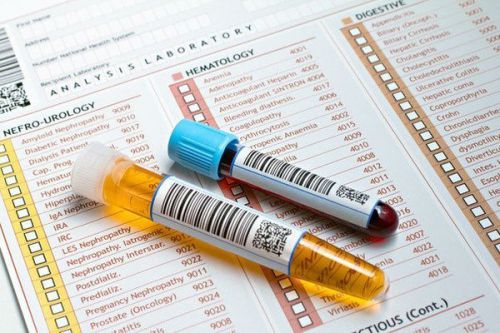

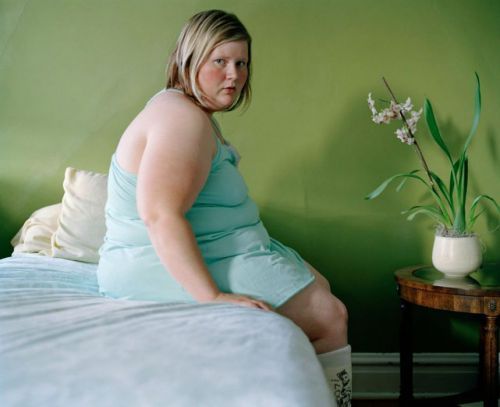
Thank you so much for giving everyone an extremely special chance to read in detail from here. It’s usually very amazing and also stuffed with a lot of fun for me personally and my office mates to visit your blog the equivalent of thrice in a week to find out the newest things you have. Not to mention, I am also certainly contented with your sensational points you give. Selected 2 ideas in this posting are easily the most beneficial we have all had.
After checking out a handful of the blog posts on your web page, I really appreciate your technique of writing a blog. I saved as a favorite it to my bookmark site list and will be checking back soon. Take a look at my web site too and let me know how you feel.
When some one searches for his required thing, therefore he/she desires
to be available that in detail, therefore that thing is maintained over here.